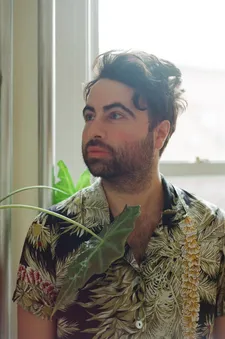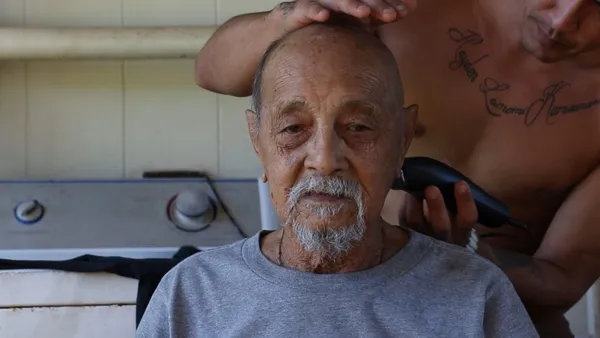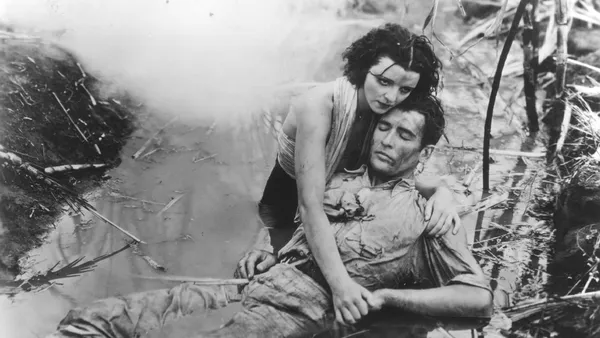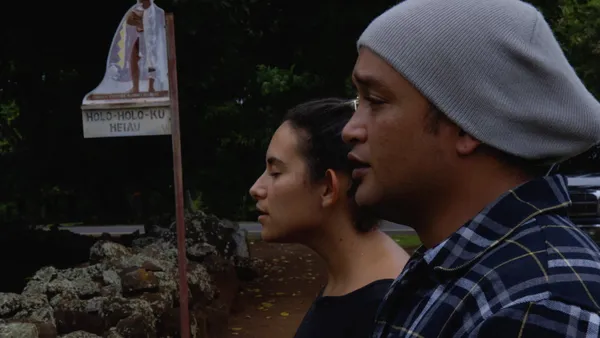Anthony Banua-Simon's Cane Fire approaches the history of the Hawaiian island of Kaua'i with the help of the personal perspective of his own family history – as though the documentarian grew up in Seattle, his great-grandfather was a Filipino émigré to the island, where he worked on its plantations.
Banua-Simon says his great-uncle Henry was important to the project. “He’d been through so many stages in his life, and the history of the island, that he is kind of reflecting what was important to him. These takeaway moments are very wise - just a lived experience to pull from.”
 |
| Anthony Banua-Simon: 'What you see is really kind of the tip of the iceberg, what I thought was most representational of what I was finding' |
He adds: “I think, it was harder to for my cousins, who are my age, to articulate, as they're going through it now - the wanting to stay on the island but being accustomed to working multiple jobs, and just kind of really questioning what's the best way forward? And what do they value? Is it worth staying?
“So many people have been displaced and had to move off the island, that I think it was hard for them. They're just so in the middle of trying to survive so it was hard to kind of take stock and articulate what does it feel like? Or what do I value the most, I think Covid, with the lockdown, it was first time for a lot of people when tourism basically shut down for a good nine months. Some people, who were able to get government benefits and have a little bit of room, for a lot of them it was the first time of actually stopping and taking stock and thinking what's the way forward for me?”
In addition to personal testimony, Banua-Simon uses archive film to explore the way that perceptions of the island have been shaped down the years, pictures that relegated the locals to background players.
The portrayal of the island on film is something Banua-Simon has been interested in for years.
He says: “There was a wealth of archive, from various sources, too. They're almost like these kind of parallel threads that I would kind of pull from when it felt like one was commenting on the other.” The Hollywood films were fairly accessible to download and the director says he would watch anything if it prompted people to say to him, “Oh, this is what I think of when I think of Kaua’i.”
He adds: “I’d look for small details, and kind of sort the films in different ways.”
He says Tom Andersen's 2003 documentary Los Angeles plays itself “was a big influence, because he would say, ‘Okay, this is a Los Angeles film as a character or a subject. What is being commented on? What, how is this film being used?'"
Banua-Simon adds: “So one thread would be the industry of Hawaii represented through the years, how did it go from tourism and all those references, and those small moments of rupture and truth that they can't quite control. I would look for that as well.”
The documentarian also uses archive from the plantations themselves. Although he says it was “harder to get to stuff they played back to the employees”, films that he describes a “anti-labour” that the plantations would “force their workers to watch”.
He says these industrial practices were the next layer of his archive, followed by “the next generation of user-generated media”.
 |
| The director's great-uncle Henry. Anthony Banua-Simon on Henry's observations: 'These takeaway moments are very wise - just a lived experience to pull from' Photo: Cinema Guild |
It was a big job and he credits his co-writer and co-producer Michael Vass with helping him to whittle things down.
“He was really good at kind of being the first audience member,” recalls Banua-Simon “I was kind of pitching him the story. It was like we were building structure together, because he never accompanied me and Kauai'i was just me filming by myself. He's not acquainted with Hawaiian history. I probably still would be lost today if it wasn't for him to rein it in and say, ‘Okay, what are you trying to say? What is this focused on’.”
Much is revealed through this carefully selected archive, not just the way in which film was used as a form of control. Not just of the land and the workforce but also in terms of the island’s “traditions”, some of which turn out to be made up rather than rooted in history.
“There is kind of a conflicted nostalgia,” says Banua-Simon, “because people that grew up there they have associations with these Technicolor films, and they're seeing where they grew up, and in an idealised way, and it's hard to not get lost in that to some degree.”
One of the key strands of the film concerns Cocoa Palms hotel – used perhaps most famously in TV show Fantasy Island – once a haunt of the rich and now fallen into dereliction. It sits on land many islanders consider sacred and Cane Fire shows activists, who want to return the area to a more natural state locking horns with those who want to redevelop the property for leisure. I ask if Covid has had an impact on the development plans.
“It's an interesting time right now, because you see the developers that towards the end, they actually defaulted on their loan, they lost possession of the property,” says the director. “So it went back up for sale. And it's interesting because I, I feel like the public opinion has changed. In the last five years, most people were saying, ‘Oh, we need to make it a hotel, we need preserve this golden era and this kind of Hollywood nostalgia’. And now more people are leaning towards ‘No, this should be a cultural site, this should be a museum, it shouldn't be a hotel, it had its time or whatever’. And I think where it's at now is there's a group that organised around it to get funds to buy the property to do that, but it's still in the grey area of who would actually take control of this initiative. But it's still a vacant lot. And what's the shame is, the hotel developer that was pushing Hawaiian activists out of the space with the idea that they were going to start construction and it never happened.”
And the director says the issues that were brought up in the film – to do with disenfranchisement and the sense that the locals are somehow ‘extras’ to be moved about as developers or businesspeople see fit – have become even more accentuated since Cane Fire was finished.
 |
| Actress Mona Maris and Actor David Newell in a production still from the 1934 film, White Heat, aka Cane Fire. Photo: Cinema Guild |
The level of rich white privilege is shockingly brought home by parts of the film.
“It's very brazen,” says Banua-Simon. “It surprised me at the time, and still does, this kind of plantation nostalgia, when I first saw it my jaw dropped.” He notes that there has been a shift in language from advertisers “trying to be folksy”. This shift in the language is something that Cane Fire makes evident because its wealth of archive stretches back so far. The message and manipulation doesn’t change but the language has become much more subtle.
“It's funny seeing that the language change over the years, and it makes me think about maybe some things that might feel more stark, you know, years in the future when we look back on things from the Nineties and the 2000s.”
Does he feel positive about the future of the island?
“I think it's hard to say. I think there's so much going on. I wanted to, with the film, kind of create this energy that would go in the right directions to people that are more focused in the community and doing really selfless work organising, both on the sovereignty side and independent side. I think that people are coming around more to saying, ‘Okay, there is an imbalance, ecologically, like, we can't go on this way’. But there is no structure for bringing things down, like everything has to go up incrementally, right? So there's really this breaking point. I think there really has to be something drastically different.”
Banua-Simon says he’s working on a short companion film to Cane Fire. He adds: “I'm going back into the archive. It’s looking at, you know, with the sugar industry when it was transitioning into tourism, they also began leasing land to biotech companies like Monsanto, Dow Dupont. And so when you look at the equivalent of what was industrial agriculture at the time and is now biotech, like pesticide research. It’s looking at how that's impacted people in the area, because there's open spraying of restricted use pesticides. So there's a lot of illness and issues around that. And I guess it's also looking at films have been done around it. But it's also looking at kind of the corporate messaging and kind of the plantation nostalgia that these companies are drawing from to kind of divide people. I hope to finish it by the end of the year.”
Cane Fire is out now in US cinemas. To finding a screening, visit the Cinema Guild site.






















